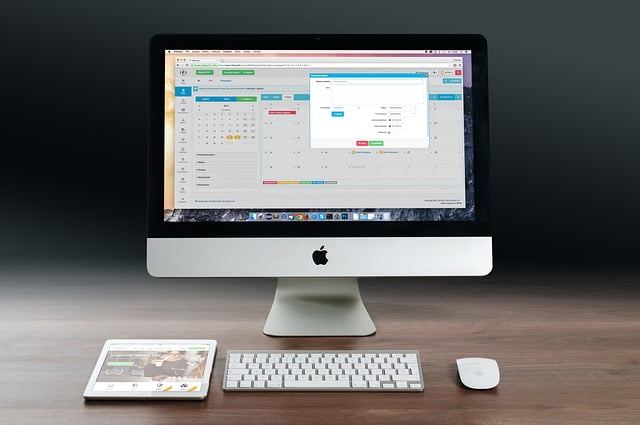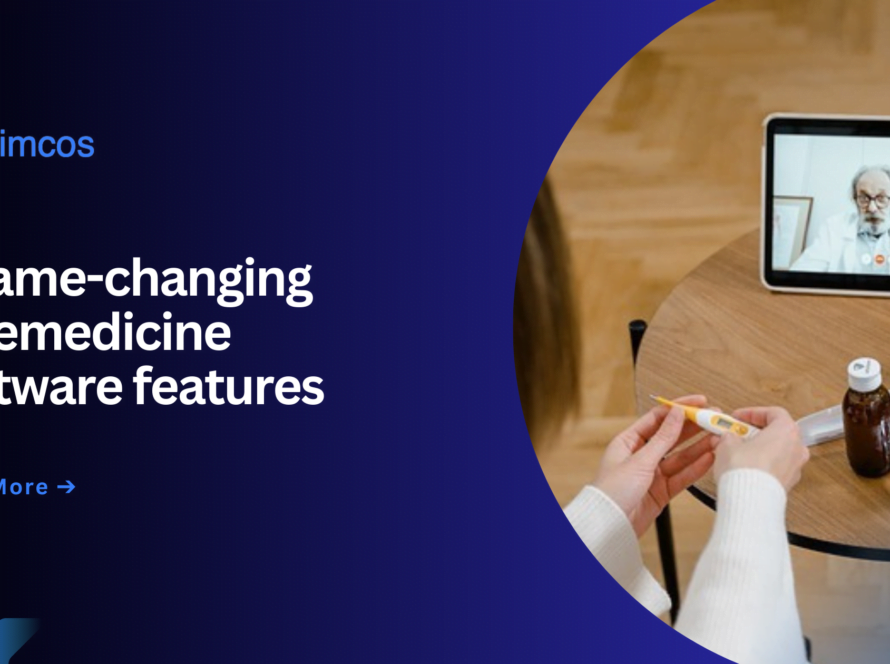In recent times healthcare data management has undergone an evolution from traditional paper-based systems to modern, secure cloud-native platforms. This transformation has revolutionised how patient information is stored, accessed and utilised in healthcare settings. Cloud technologies have enabled enhanced accessibility, strong security measures and the ability to harness big data analytics for improved diagnostics and personalised care. This shift not only addresses the limitations of physical records but also sets the stage for a more efficient, interconnected and data-driven future in healthcare delivery.
Table of Contents

What are cloud native platforms ?
Cloud-native platforms are advanced computing environments designed to provide cloud computing capabilities fully. They use technologies like containers, micro services and continuous integration/continuous deployment (CI/CD) pipelines to build, run and scale applications seamlessly in cloud environments.
Unlike traditional infrastructures, cloud-native platforms offer high scalability, resilience and flexibility, enabling rapid development and deployment of applications. They allow businesses to optimise resources, improve performance, and enhance security by taking advantage of the cloud’s distributed nature. These platforms support dynamic scaling, automatic updates, and easy integration with various services, making them ideal for modern, agile software development.
What is meant by storing patient data?
Patient data storage in healthcare refers to the systematic collection, management and preservation of patient-related information, such as medical histories, diagnoses, treatment plans and test results. Traditionally stored in paper files, this data is now increasingly digitised and maintained in electronic health records (EHRs) and electronic medical records (EMRs).
Modern healthcare facilities use secure cloud-native platforms to ensure data accessibility, scalability, and protection. These platforms support real-time data sharing among healthcare providers, enhancing care coordination, improving patient outcomes and maintaining compliance with regulatory standards.
Challenges in paper based storage in healthcare
Healthcare facilities have relied on paper-based systems to store patient records. While this method seems familiar, it presents significant challenges that hinder efficient care, data security and overall patient experience. Let’s gets deeper into the limitations of paper records :
1. Space
Storing large volumes of paper records required substantial physical space, resulting in messy storage rooms and high maintenance costs. Hospitals and clinics had to allocate significant areas for filing cabinets and storage units, which could otherwise be used for patient care or other services. Managing and organising these records added to the operational burden and expenses.
2. Accessibility
Retrieving specific patient information from paper records was time-consuming and difficult, leading to delays in clinical decisions and patient care. Healthcare providers had to manually search through extensive files, increasing the risk of errors and inefficiencies. This slow process hindered timely access to critical patient data, negatively impacting the quality and speed of medical treatment.
3. Limited Scalability
Physical space is always an issue. As patient numbers grow, so do the records, requiring more and more storage rooms with specific climate control to preserve the documents. Electronic storage on servers is far more scalable.the use of paper makes the storage difficult as it requires space and this limits the scalability.
4. Data Security and Loss
Paper records are vulnerable to loss through misplacement, theft, or natural disasters like floods or fires. Ensuring data security is challenging because physical access to files could lead to unauthorised viewing or theft. Healthcare facilities must implement stringent access controls and storage protocols to protect patient information from breaches, ensuring compliance with privacy regulations.
5. Error Prone
Handwritten notes in healthcare is misinterpreted due to illegibility or unclear documentation, increasing the risk of errors in diagnosis or treatment. Misunderstandings or ambiguities in handwritten entries leads to medical mistakes, affecting patient safety and the quality of care provided by healthcare professionals.
How patient data storage went from paper piles to secure cloud native platforms ?
For a long period the patient records lived in piles of paper, thrown away in filing cabinets within hospitals. This system, while familiar, had its drawbacks. Here’s the journey of patient data storage from paper piles to secure cloud-native platforms :
• The Paper Paradigm
Handwritten notes in paper records were prone to misinterpretation due to illegibility or unclear documentation, increasing the risk of medical errors. Doctors and healthcare providers relied on manual searches through physical files or faxed requests, which were time-consuming and prone to delays. This limited accessibility hindered timely access to critical patient information, impacting the quality and efficiency of medical care delivery.
• The Digital Revolution
The adoption of Electronic Health Records (EHRs) marked a significant shift from paper-based systems to digital formats, enhancing accessibility and organisation within healthcare facilities. Despite these advancements, EHR systems initially operated in isolation within hospitals, limiting data sharing and collaboration between providers. Early digital storage solutions also faced security challenges, with concerns over data breaches and unauthorised access, prompting the need for more strong security measures in healthcare information technology.
• The Cloud Advantage
Cloud-native platforms revolutionised healthcare by offering secure, scalable storage solutions. Patient data stored in secure data centres is accessible globally, enhancing collaboration among healthcare providers and enabling quick decision-making. Robust security features like encryption and access controls ensure data protection, while automatic backups and disaster recovery mechanisms maintain data integrity. This shift also reduces costs associated with physical storage and administrative overhead, optimising healthcare resources for improved patient care.
• The Future of Healthcare Data
Cloud-based platforms enable healthcare providers to harness big data analytics for enhanced diagnosis, personalised treatment plans and improved healthcare delivery. These platforms promote interoperability, facilitating seamless data sharing among different providers and systems. This connectivity enhances care coordination, reduces redundancies and supports informed decision-making across the healthcare ecosystem, ultimately improving patient outcomes and operational efficiencies.
• Integration and Interoperability
Modern cloud-native platforms enhance integration and interoperability within healthcare systems. They enable seamless connections between various health IT systems, allowing for the smooth exchange of patient information across different providers. This capability improves care coordination by ensuring that all relevant data is accessible to authorized personnel, regardless of their location. Consequently, these platforms contribute to more informed decision-making and better patient outcomes, as healthcare providers can collaborate effectively and have a comprehensive view of patient history and treatment.
The shift from paper piles to secure cloud platforms has transformed patient data storage. It offers enhanced accessibility, security and valuable insights for improved care delivery. This secure and scalable solution paves the way for a more efficient and data-driven future of healthcare.

Benefits of cloud native storage platforms
The transition from paper-based records to cloud-native storage platforms represents a significant leap forward in data management. Cloud-native solutions that changed how hospitals handle patient information, offering numerous benefits that address the limitations of traditional methods. These platforms enhance accessibility, boost security, facilitate disaster recovery, provide data-driven insights and offer improved scalability. By providing these advancements, healthcare providers can smooth operations, safeguard sensitive data and ultimately deliver superior patient care.
• Enhanced Accessibility
Cloud storage enhances accessibility by enabling authorised healthcare personnel to securely access patient records from any location with internet connectivity. This eliminates the inefficiencies of searching through physical files, enabling instant retrieval of critical information.
Healthcare providers quickly access patient histories, test results, and treatment plans, facilitating faster decision-making and improved patient care coordination. This accessibility supports remote consultations, streamlined workflowsand enhances overall operational efficiency in healthcare delivery.
• Boosted Security
Cloud providers implement advanced security measures, including strong encryption and stringent access controls to protect sensitive patient data stored in the cloud. These measures ensure that only authorised personnel access and manage patient information, significantly reducing the risk of unauthorised access, breaches or data theft.
Unlike paper records susceptible to physical loss or theft, cloud storage offers enhanced security features that comply with healthcare regulations,ensuring patient confidentiality and data integrity are maintained at all times.
• Disaster Recovery
Cloud storage enhances disaster recovery by maintaining data redundancy across multiple servers and geographic locations. In the event of natural disasters, system failures or cyberattacks, this redundancy ensures that patient information remains accessible and secure.
Unlike paper records vulnerable to physical damage or loss, cloud-based disaster recovery mechanisms automatically back up data, minimising downtime and ensuring continuity of healthcare services. The protection ensures that healthcare providers reliably access patient data without disruption, prioritising patient care and safety.
• Data-Driven Insights
Cloud storage empowers hospitals to provide big data analytics on patient information, enabling enhanced diagnosis, personalised treatment planning and optimised healthcare delivery. By analysing large datasets in real-time, healthcare providers identify trends, patterns and correlations that lead to more accurate diagnoses and tailored treatment plans.
This capability not only improves patient outcomes but also enhances operational efficiency by predicting patient needs, optimising resource allocation and supporting evidence-based decision-making across healthcare.
• Scalability
Cloud storage offers seamless scalability, adapting effortlessly to accommodate growing volumes of patient data without the constraints of physical space. Hospitals expand storage capacity on-demand, ensuring that new records and increasing data volumes are managed efficiently.
This scalability eliminates concerns about running out of storage space traditionally associated with physical infrastructure. Healthcare providers focus on delivering quality patient care without the logistical challenges of managing and expanding physical storage facilities.
The transformation of healthcare data management from paper-based systems to secure cloud-native platforms represents a pivotal advancement in modern healthcare. Cloud technologies have not only improved accessibility, security and scalability of patient data but have also enabled profound insights through advanced analytics. This evolution promises a future where healthcare delivery is more efficient, interconnected and data-driven, ultimately enhancing patient outcomes and operational efficiencies across the healthcare ecosystem. Embracing cloud-native storage platforms underscores a commitment to innovation, ensuring that healthcare providers deliver optimal care with enhanced precision and effectiveness.

How does Himcos help?
Himcos provides Business Software Modernization services. Our team isn’t just skilled, you get the best minds tackling your modernization project, ensuring exceptional quality and results. Our experts help improve performance, reduce costs, enhance security, and foster innovation providing our clients with scalable, secure and high performing applications.



